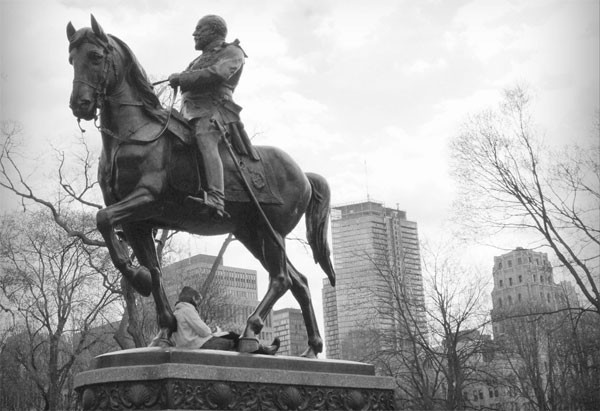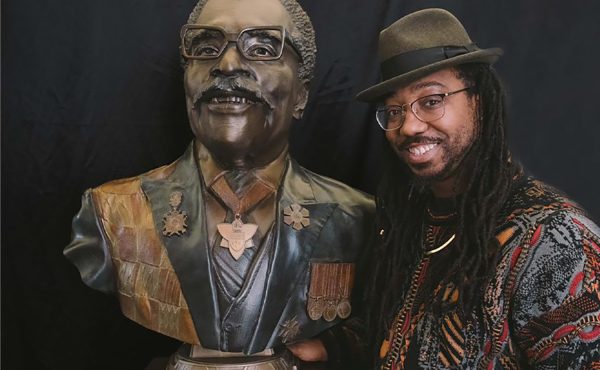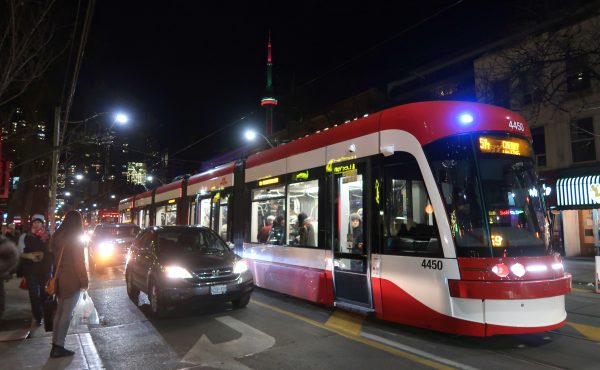Our story ends in Toronto, but it starts nearly 12,000 kilometers away: in India, at a place called Coronation Park. It’s a grand, wide-open space on the edge of Delhi, the dusty capital of what will soon be the most populous nation in the history of the world, a city teeming with more than 11 million people.
It was right here, in this park, that the British threw their biggest parties to celebrate their rule over the “crown jewel” of their empire. The first one was in 1876, to honour the day Queen Victoria was crowned as the Empress of India. There was an immense, lavish procession, with the country’s most important British officials riding in on elephants and 70,000 people in the crowd.
When Queen Victoria died and the crown was passed down to her son, King Edward VII, they did it all over again. This time, the durbar (which is what they called these things) was even bigger. The celebrations went on for two whole weeks. More than 100,000 people showed up. There were fireworks. Parades. Even polo matches. An entire city of tents rose up on the grounds, supplied with their own electricity, running water and rail lines. There were commemorative stamps printed. Maharajas, Viceroys and Governors came from all over India. The king’s own brother even made the trip from England.
And that was nothing. A few years later, King Edward was dead. And the new one, King George V (who you probably know as Colin Firth’s dad in that movie), decided he wanted to attend his durbar in person. He and his Queen sat on golden thrones under golden umbrellas as 80,000 Indian troops paraded through the park before them. There were vast seas of horses and camels and cannons. King George even seized the moment to declare that Delhi would be the new capital of India.
Of course, the whole thing was a facade — a pretty spectacle to help to mask the vile things the British were doing. At the Jallianwala Bagh massacre they ordered fifty British Indian Army troops to fire on a trapped crowd of unarmed men, women and children for ten to fifteen minutes until their ammunition ran out. By the end there were more than a thousand bodies on the ground. At the Qissa Khwani Bazaar massacre, they drove armoured cars through crowds of non-violent demonstrators, used machine guns on the ones who refused to leave the injured behind, and then hunted the rest through the streets for hours. The members of a regiment who refused to fire on the crowd were all arrested. Some got life in prison.
But the Indian demonstrators, led by figures like Mahatma Ghandi, would eventually prevail. India declared independence soon after the Second World War. Coronation Park became little more than a reminder of a terrible time. So it was left to decay; the grounds mostly untended, overgrown with trees and shrubs. And it was far from the only symbol of colonial rule left in Delhi. All over the city, the British had erected monuments to their kings and queens and aristocrats. And all over the city, people didn’t want them anymore. So they were pulled down off their pedestals, rounded up, and shipped off to Coronation Park, where they were tucked away in an obscure corner and forgotten.
Some of those statues are still standing there now, monuments to men and women who once ruled half the world, rotting quietly away in an overgrown patch of land at the edge of a park that once played a central role in their dominion. The BBC recently called it “the final graveyard of the British Empire.”
We’re interested in one statue in particular. It’s of Kind Edward VII, who ruled in the early years of the 1900s. His statue was designed by Thomas Brock, the same royal sculptor who built the giant memorial to Queen Victoria that towers outside Buckingham Palace. His bronze King Edward sat astride his horse in Delhi’s Edward Park, just across the street from the medieval Red Fort which served as the Mughal capital in India for centuries before the British drove them out. The statue even got a bonus plaque when King George swung by during his durbar to pay tribute to the tribute to his father. But after the fall of the empire, the Indian government renamed Edward Park after one of the heroes of the independence movement, put up a statue of him instead, and had King Eddie join the other relics in Coronation Park.
He didn’t stay there long.
On the other side of the world, there was another former colony with a very different attitude toward the British: Canada. And in Toronto in 1969, there was a rich conservative businessman/philanthropist/politician by the name of Harry Jackman. He’s the guy who got the statue of Winston Churchill put out front of Nathan Philips Square. And Jackman thought Queen’s Park was in need of a good statue of a guy on a horse. Rich conservative businessman/philanthropist/politician strings were pulled. King Edward and his horse were cut into three pieces and shipped halfway around the world. He ended up in Toronto, standing outside the provincial legislature, right where he himself had come to open the park back in his days as a prince.
And so today, the very same statue that once stood outside the medieval Red Fort and among the forgotten monarchs of Delhi sits quietly with the other monuments in Toronto’s Queen’s Park.
A version of this post originally appeared on the The Toronto Dreams Project Historical Ephemera Blog. You can find more sources, images, links and related stories there.
Photo cropped from the original by Flickr user martin…T.




